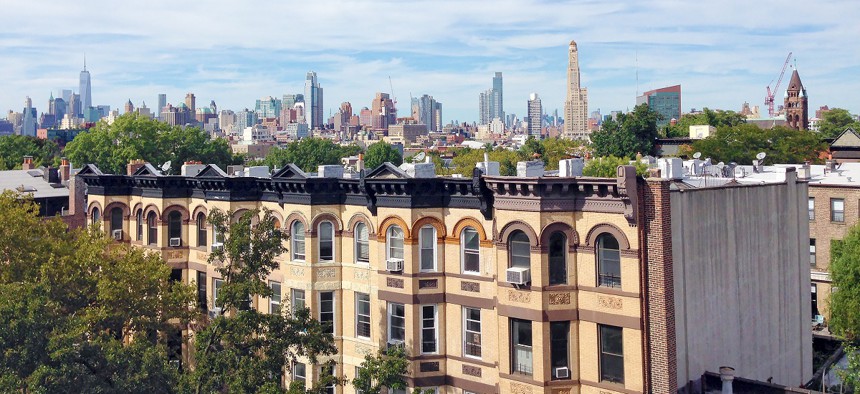Heard Around Town
Report: Rent increases up to 4% and 7% would maintain rent stabilized landlords' profits
“I do expect the rent increase to be lower than it was the last couple of years because the data supports that,” Community Service Society’s Samuel Stein said.

View of the Manhattan skyline from a rooftop in Park Slope, Brooklyn MayLindz/Getty Images
Among the many data sources that will help inform a vote on allowable rent adjustments for rent-stabilized apartments in New York City later this year, one measure that considers operating costs for owners came in notably lower than the last couple years.
A report published Thursday by the staff of the Rent Guidelines Board found that rent increases between 2.5% and 4% for one-year leases and between 4% and 7% for two-year leases would allow owners of fully rent stabilized buildings to maintain a constant net operating income.
Those figures, which are not actual recommendations to the board but some data points among others for board members to consider, are notably lower than the ones that were included in the same report last year. The 2023 report estimated that increases of up to 8.5% for one-year leases and up to 16% for two-year leases would allow owners of rent stabilized buildings to maintain a constant net operating income.
Every year, the staff of the Rent Guidelines Board produces a series of reports on the state of the housing market and economy. One of those reports in particular, the Price Index of Operating Costs, measures expected changes in the costs of maintaining and operating buildings that include rent stabilized units. While the commensurate rent adjustments calculated in this particular report often garner media attention, they’re merely one collection of data points among others – including other research reports and public testimony – that the members of the board will consider before voting on the actual allowable increases for rent-stabilized units that will go into effect in the fall.
Samuel Stein, housing policy analyst at the Community Service Society, noted that an earlier report released by RGB staff reflected an improved financial picture for landlords over last year. “The economic picture is the reverse of what it was last year, and so we hope that the rent adjustment is also the reverse of what it was last year,” Stein said. “I do expect the rent increase to be lower than it was the last couple of years because the data supports that.”
While last year’s approved allowable increases were lower than the highest end of last year’s commensurate rent adjustments, they exceeded the rent freeze or lower allowable increases that many tenant advocates pushed for.
The Rent Stabilization Association, a trade group representing landlords across the city, said in a statement that this year’s report shows that the cost of running and maintaining rent stabilized buildings is an “economic impossibility.” “Building owners are still reeling from last year’s inadequate rent increases. Increases this year that fail to meet the high costs of property taxes, insurance, record-high interest rates, labor costs, energy bills, and the cost of complying with city mandates will further plunge buildings into economic distress,” the group said in a statement. “Rent is the income that pays these bills. If owners can’t keep up with these costs, the future of New York City’s affordable housing economy is at risk.”

